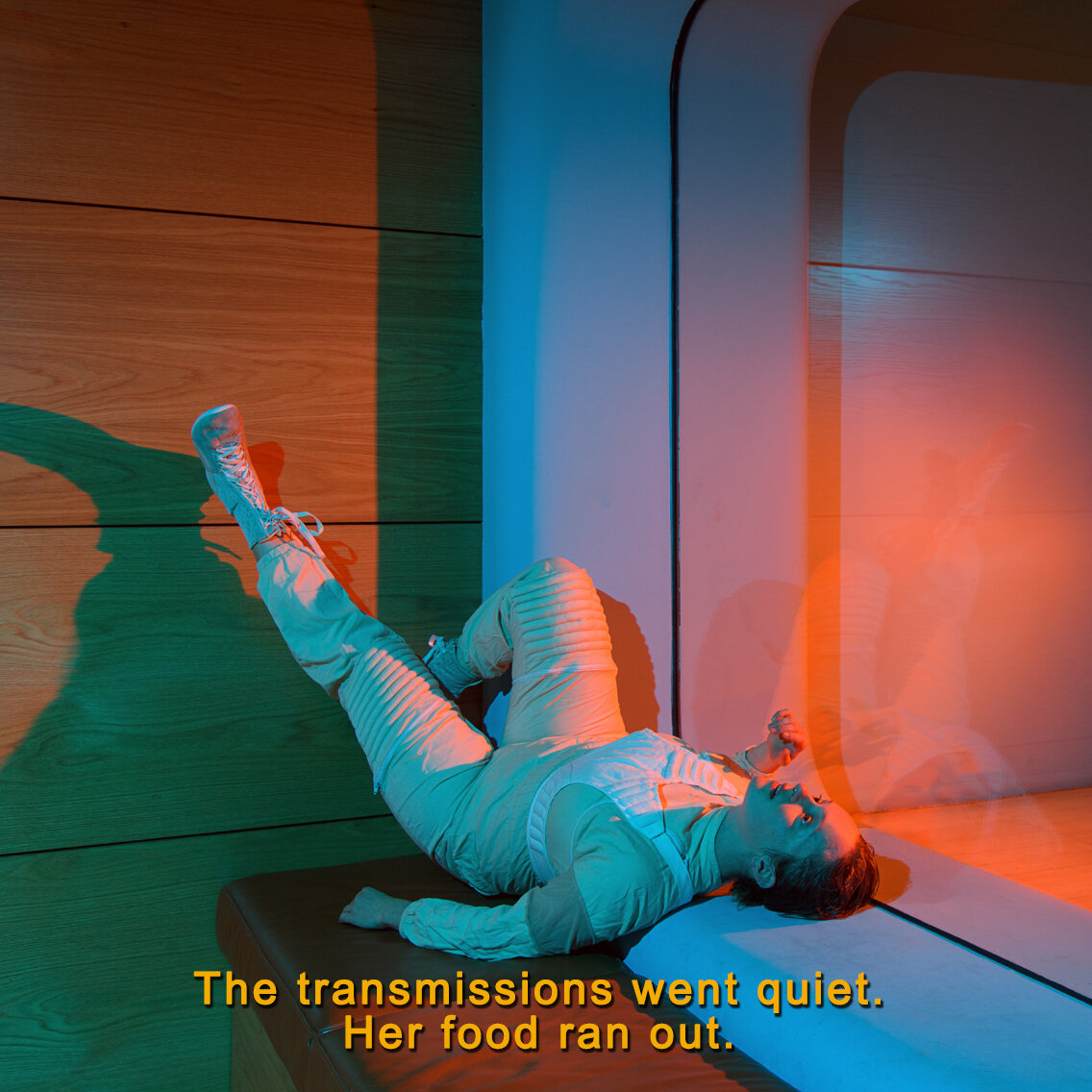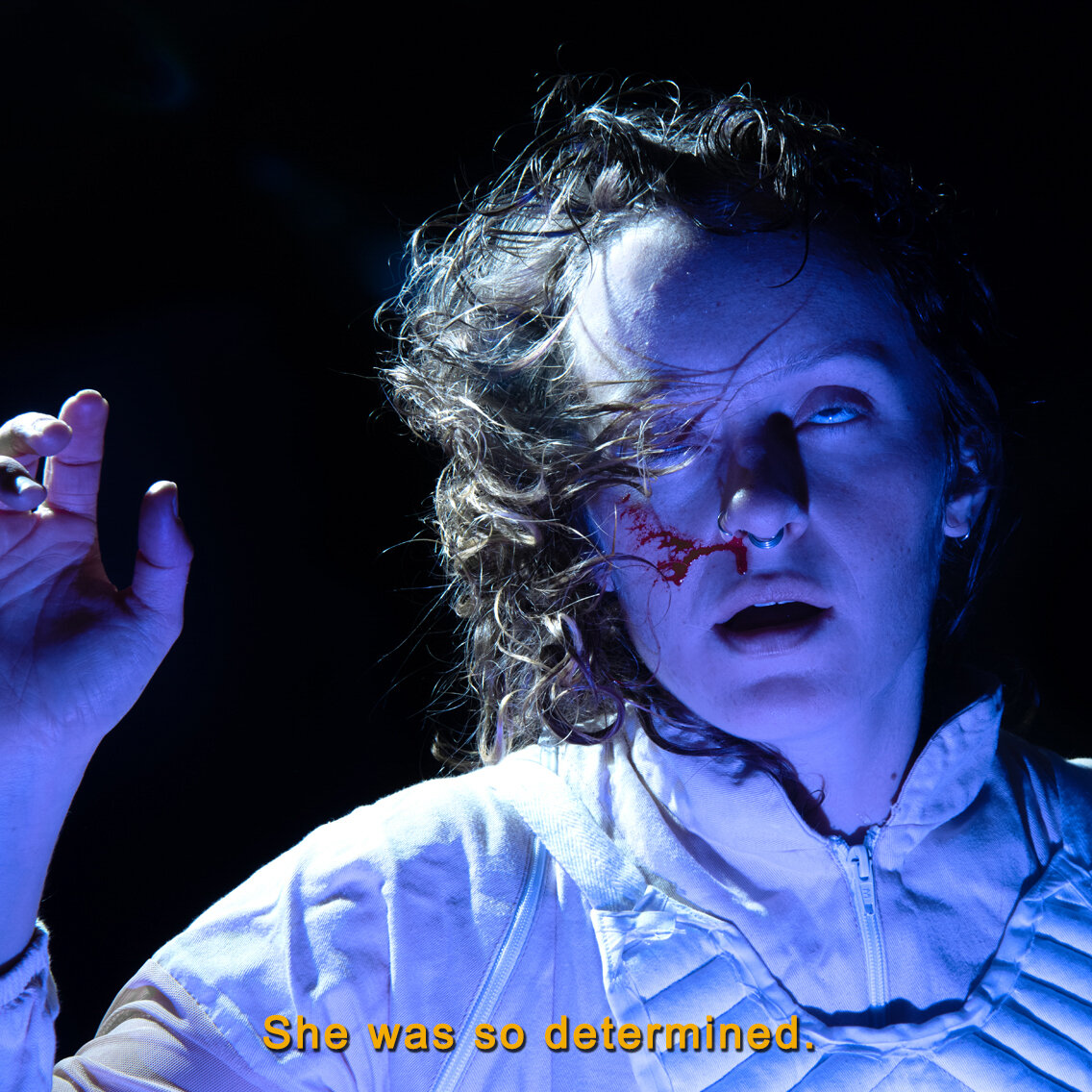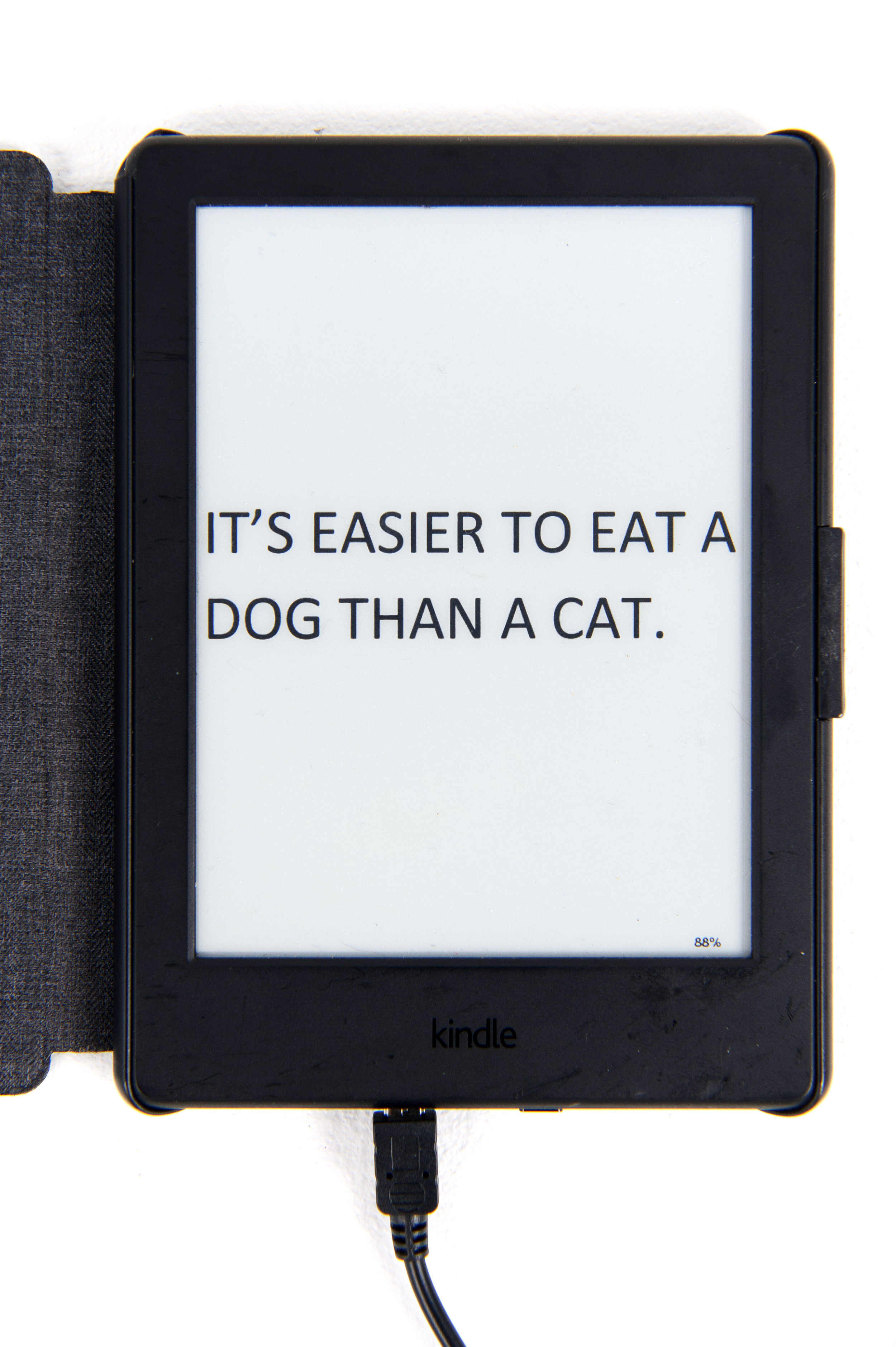Sarah Walker: West Space support materials
My work uses comedy, narrative and speculative fiction to create surprising encounters with tensions around death, disaster and catastrophe. I work across many forms: video, audio, text-based works, installation and writing. I also collaborate extensively across theatre, performance and live art.
VIDEO WORKS
My video works expand, distort and satirise cinematic tropes, to draw attention to conventional modes of thinking about disaster, heroism and coping strategies.
In Will and Testament, my attempts to record a video will are constantly interrupted by an overactive censor function that erases any attempt to use language around or related to death, to demonstrate our reliance on euphemisms when discussing mortality.
In Ado (Pillar of Salt), the camera holds on one moment: a fifteen minute encounter with an unseen, unnamed catastrophe. Presented in extreme slow motion, without sound or context, the work investigates ideas around affect and the constitutive blank, asking what we choose to witness, and what it means to observe what are told to ignore.
In Death Drive, I used a people mover as a makeshift hearse for the living, a tragicomedic space for frank discussions about death.
UNFLINCHING WALK
The work I am hoping to develop through this period of research and making, Unflinching Walk, draws on notions of the hero in cinema, and how action films model a response to disaster that is defined by independence, flattened affect and refusal to collaborate or form communities.
This piece is framed around what TV Tropes calls ‘The Unflinching Walk’: a scene where a character (almost always male) struts in slow motion towards the camera, unfazed by the enormous explosion occurring behind them. Below is a test supercut of several of these scenes.
This will serve as the jumping-off point for creating a two-channel key work, working with a team of three (director Jordan Prosser, VFX artist Dave Abbott and costume/props maker Eve Gilbert) to create reaction footage set in the world of each original film.
These ‘reaction shots’ also have the capacity to become the backgrounds for an open-invite, public performance outcome, where participants can insert themselves into the reactions via green screen, thus creating a large series of reactions, responses and troublings for the original heroic walks. Remember that special effects exhibition at Scienceworks in the 90s, where you brought in a VHS and got a recording of yourself climbing a vertical cliff face, crossing a river of lava, and encountering aliens? Like that, but critically engaged.
Given my experience as a writer and critic, I’m also very interested in an expanded publishing model for this project. I’ve been reflecting a lot recently on Sally Olds’ idea of ‘social writing’, and considering what modes there might be of wrestling with an idea publicly, in a multiple, complex manner. This might be a digital zine, or something a bit stranger: a Twine game, perhaps, where the hero cannot succeed by following standard ‘punch first, ask questions later’ approaches.
I first began working with the notion of the hero in In Living Colour, a series of Viewmaster reels that mashed up cinematic narrative tropes; each story undercut by an undramatic death at the end.







I also started playing with notions of preparing for disaster through the work Exhaustive Rules for the End Times, a solar-powered Kindle (the preferred information delivery mechanism for preppers) loaded with rules for the apocalypse. The text combines real survivalist tips with a fictional narrative emerging through what is not said, examining future fear, moral relativism and the impossibility of being totally prepared for disaster.







This thinking also lead the creation of END FM, a hacked receipt printer that prints a fictional series of texts to a commercial radio station. The hosts ask the listeners what they would keep if the world ended. The responses are typical, and then the world ends. The work presents a relentless, unstoppable archive of disaster, where comedy rubs shoulders with horror, producing reams of paper that spill across the gallery floor.
AUDIO WALKS
In exploring different modes of engaging with future fear and embodied relationships with space, I have also made a number of immersive, binaural sound walks across Melbourne and Singapore, each designed to be listened to while passing through a specific site. The walks use the bleed between narration, diagetic audio and recorded sound to situate the listener simultaneously in their own time, and in a speculative future. They create an auditory space where the lines between truth and fiction blur, where present and future collide and where the actual and virtual become entangled. They lay new meanings over familiar urban landscapes, and imagine what might be to come.
These have included a walk set in Brunswick in the aftermath of a catastrophic flood; in Melbourne investigating hostile architecture and a nuclear future; in Singapore in a time where the country has reclaimed so much land from the ocean that the world has become a giant dust bowl; and along the Upfield Bike Path, imagining a post-electric world which locates the human body as a force for change, movement and power.
Speculative fiction, humour and unsettling, temporally uncertain sound combine in these works to encourage new ways of thinking about the present, and how we prepare for what might go wrong.
OTHER WORKS
I am a writer (my essay Contested Breath was a Walkley Award finalist, and my first book The First Time I Thought I Was Dying, a collection of essays about the friction between the body, society and control, won the 2021 Quentin Bryce Award), and so text often bleeds into my fine art practice.
Bolt Upright was a large-scale text work, describing ten seconds of existential terror through a series of tangential, fragmentary sentences where words sag under their own weight. Drawing on the work of Maurice Blanchot, W.J.T Mitchell and Roland Barthes, the work uses description as a way to arrest narrative progression and sense-making.




Apparition was created through a series of interviews with people who had experienced supernatural events. Thirteen seemingly blank pages contain a description of a ghost experience, revealed only when seen with a UV light. The descriptions are as ephemeral and irretrievable as the experiences themselves, while the viewer is implicated in the act of uncovering meaning and left to consider their own experience of the uncanny.



The use of UV ink also informed my recent work Her Small White Hands. In 2021, I was commissioned by Geelong Gallery to respond to Frederick McCubbin’s iconic painting A Bush Burial. Her Small White Hands, was a large-scale text work in the form of a script; a conversation between McCubbin and the model for the grieving woman in his painting: his wife, Annie. A few years after the painting was completed, the couple’s daughter, Mary, died in an accident.
On the wall, gaps start to form in the dialogue, which, when raked with a UV torch, reveal Annie’s inner monologue. As she stands, posing for a grief she has not yet felt, she experiences a vision of the loss of her child. Future and present collide. The unutterable comes to her, her thoughts bloat and race, until the ink itself begins to run down the wall.
You can watch a video here with me talking about the work with Jill Orr and curator Lisa Sullivan.



In short: I make funny, speculative work that looks for surprising ways to engage with conventional ways of thinking about disaster, catastrophe and death. Thanks so much for reading, and for the chance to apply.
